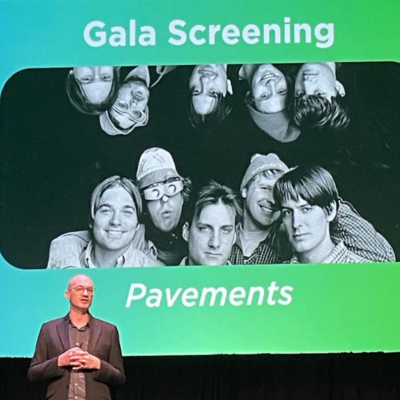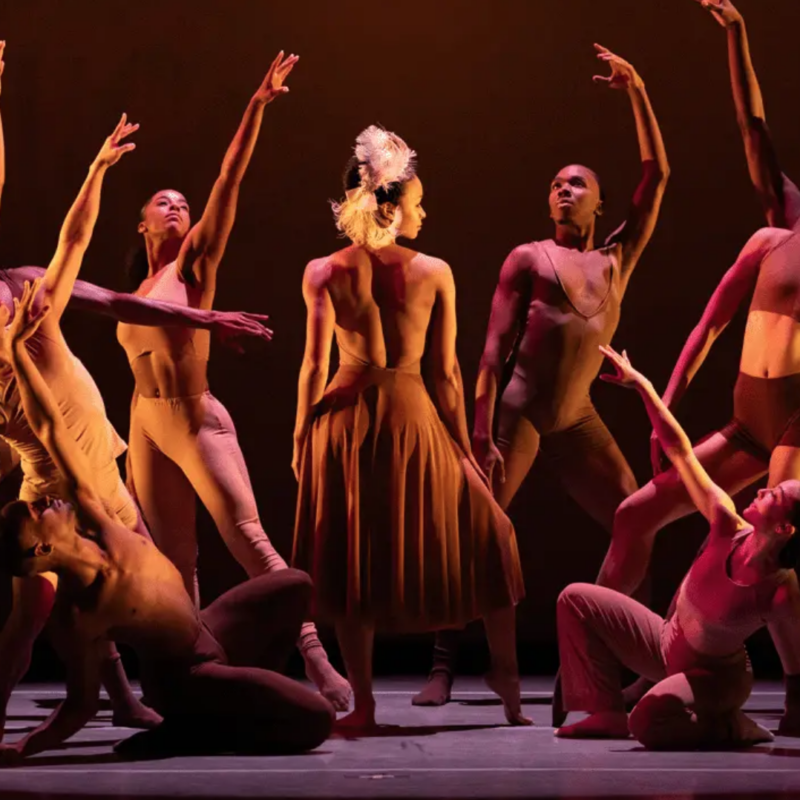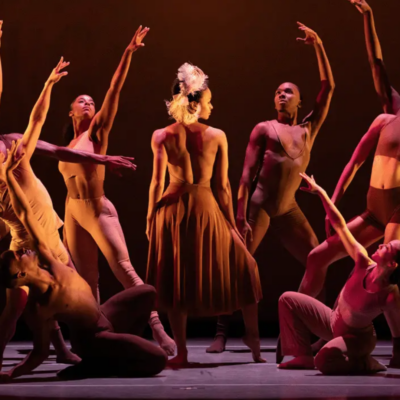Live Arts’ current production of Sweeney Todd isn’t without its share of challenges. There are no visible set hands and no blackouts; the cast is nearly always onstage, involved, engaged. And it’s a large cast, filled with huge voices like Doug Schneider in the
|
Live Arts Artistic Director John Gibson (holding razor) keeps the current |
role of Fleet Street’s most barbaric barber, culled from roughly 80 auditions, a huge turnout for a Live Arts casting call.
But perhaps the biggest challenge facing Live Arts Artistic Director John Gibson is this: Sweeney Todd will still dispatch his victims with that steel-toothed razor of his, but there is no trapdoor in the show.
“Doing away with trapdoors may not have any meaning for the audiences,” says Gibson over a cup of coffee. “But it has very intense meanings for me.”
And we’re talking formative intense. First-time-I-saw-a-play intense. Basis-of-his-career intense. At 5 years old, Gibson watched his older brother perform Sweeney Todd with his eighth grade class—a “creaky old melodrama,” he calls it. “But it blew my mind.”
Then there’s subject-matter intense. As in, Sweeney Todd is unrestrained id, a portrait of the human revenge drive gone all Jackson Pollock with a razor. And dramatic-presentation intense: Stephen Sondheim and original director Harold Prince had wildly different ideas about the play during their collaboration, caught somewhere between what Gibson calls “a Brechtian epic” and a traditional music hall melodrama.
Any other director might handle the razor’s edge of Sweeney Todd’s intensity as simply as the barber dispatched his victims—simply open a trapdoor and drop each of those tensions into the basement, make mincemeat of some of the show’s unsettling qualities. (Hey, Hollywood did it.) But Gibson isn’t that director.
Instead, Gibson sounds personally prepared to open his razor and split the difference between Sondheim and Prince, between chilly isolation and complete histrionics. He refers to himself as middle-aged during our talk, then says about the play’s violence and deaths that he is “dealing with these questions at a time when I have experience and self-confidence to deal with them.” He details the show’s penultimate scene for me, the final “Ballad of Sweeney Todd,” calls it “really fucking creepy,” and I concur. He lists the number of deaths in the play—eight—off the top of his head. It’s all a bit chilling, to be honest.
It’s also exciting. Gibson tinkered with this sort of spare presentation of huge emotion in A Streetcar Named Desire. But while the big city clamor of Streetcar didn’t always fit the chilly remove of some of Gibson’s smaller scenes, Sondheim’s barbershop of horrors sounds like a match.
“It’s a very small story in many ways,” says Gibson. “The stages are small, the scenes are small. No scene has more than three characters, except for a few crowd scenes.” And most of those smaller scenes end with one less character than they started with.
Gibson says that he “wasn’t interested in buckets of blood” but a “more metaphoric or poetic staging, something that feels, in places, dreamlike.” But with no tricks and no trapdoors, Gibson’s read of Sondheim’s play may be every bit as intense as it deserves to be.
Migration flies south
As Curtain Calls’ blog counterpart, Feedback, noted last week on c-ville.com, Migration: A Gallery will close on January 26, 2009, after three years of business, citing a lack of sales and an audience in the Downtown Mall gallery. It’s a big loss: As an exhibition space, Migration provided the same sort of access to a handful of skilled artists scattered across the country that other local galleries provided for local artists.
Rob Jones, co-owner of Migration with his wife, Laura, wonders if that sort of access might’ve been the problem. “With the scope we work in, there are no boundaries,” says Jones. “The business model we’d pursued has not really proven to be fruitful in Charlottesville. I don’t know if that’s because the work we show here is not Virginia-centric. We’ve strived to bring work from outside Charlottesville.”
Jones says that Migration’s artists have been supportive of the gallery. “Everyone is staying on board so far,” says Jones, who plans to bring six or seven artists to an art fair in New York in May. “The relationships will continue with each of the artists.” For more on Migration’s closing, click here.
The union of The Cinnamon Band
Drummer Neil Campbell and guitarist John Harouff, the two heavy-hitting henchmen behind The Cinnamon Band, make one hell of a first impression. The two won attention as high school students as two-thirds of the shapeshifting rock act The Union of a Man and a Woman, including from Jagjaguwar’s Darius Van Arman, the former local who signed the act
|
Spice rock: The Cinnamon Band’s John Harouff adds some flavor during a recent set at Gravity Lounge. |
to his label. An opening set for indie faves Handsome Furs at Satellite Ballroom in April led to a few more co-bills; now, the pair says they’re “all but completely confirmed to go on tour with Handsome Furs in June, possibly acting as a backing band.”
And during an opening set at Mates of State’s recent gig at Gravity Lounge, The Cinnamon Band ripped through a half-dozen tunes that grew from silk-lined vocal
harmonies into a shrapnel cloud of shimmering chords and skull-rattling drums. Hearing Harouff strum to Campbell’s drum fills is a bit like listening to Bruce Springsteen team up with Scottish post-punks Mogwai—there’s lean, refined songcraft, but no shortage of showmanship or ferocity.
“When I originally envisioned the band, it was with a lot of multiple vocal parts,” says Harouff. “I envisioned two guitars, bass, drums, as many vocalists as possible.” But, he adds, “Neil and I have a chemistry…It’s hard for even one other person to get involved.”
Right now, the band is keeping a low profile until a January gig in Norfolk. But head to myspace.com/cinnamonband to listen to a handful of tunes—I recommend “Call Me a Doctor” or “Wider Than a Mile”—and to keep an eye out for another local gig soon.







